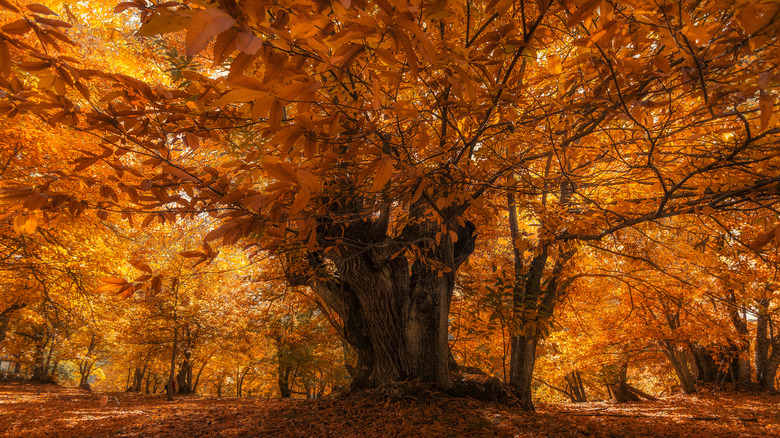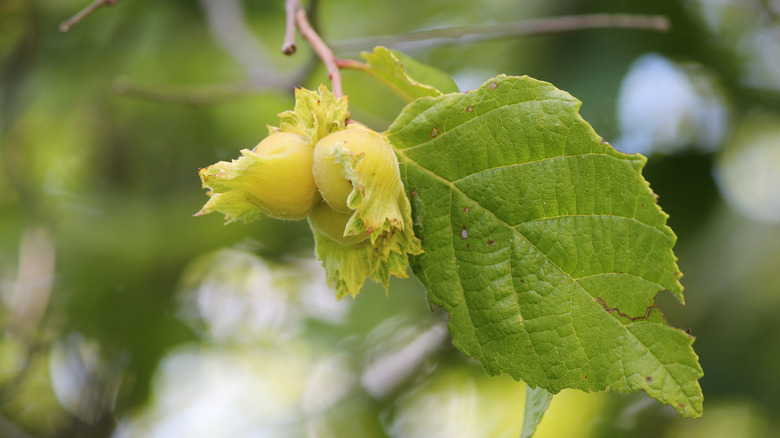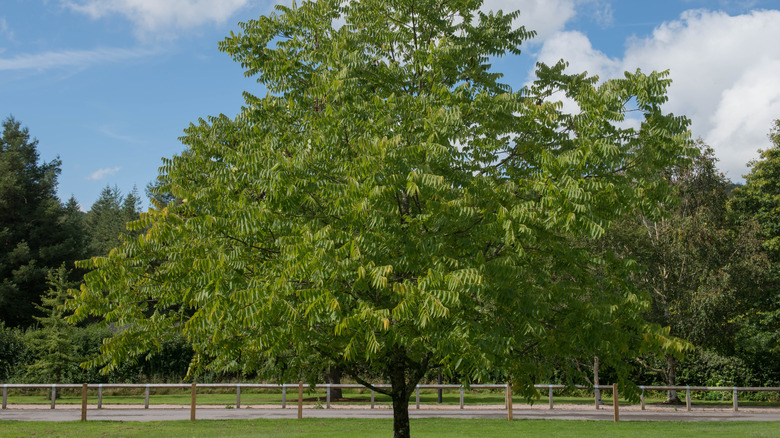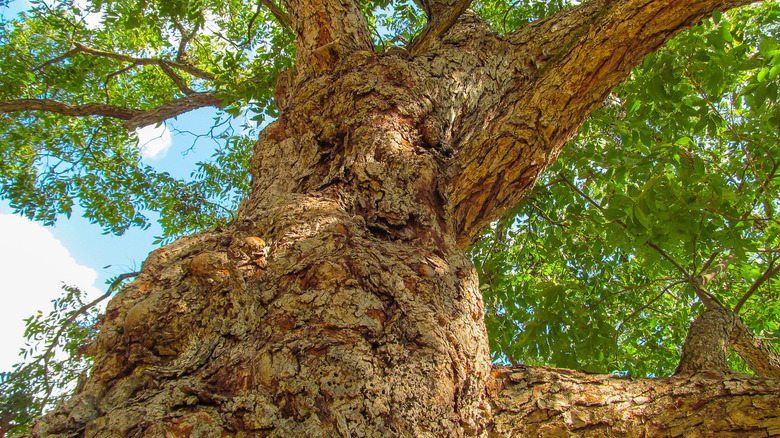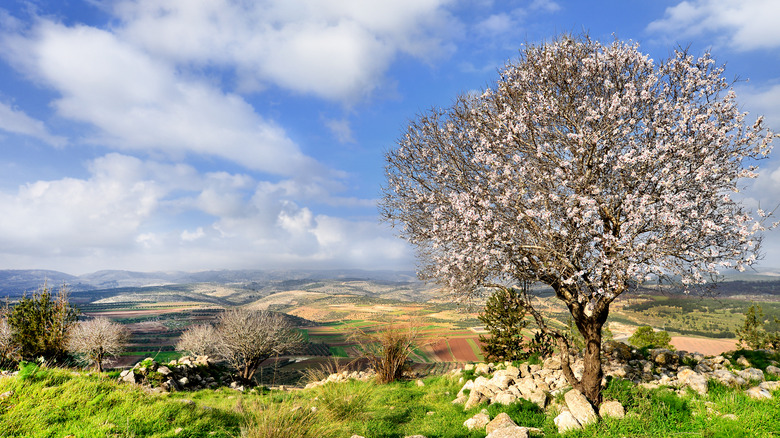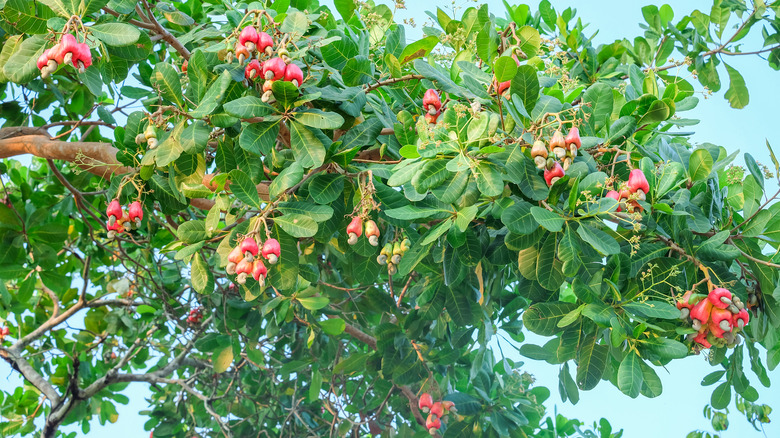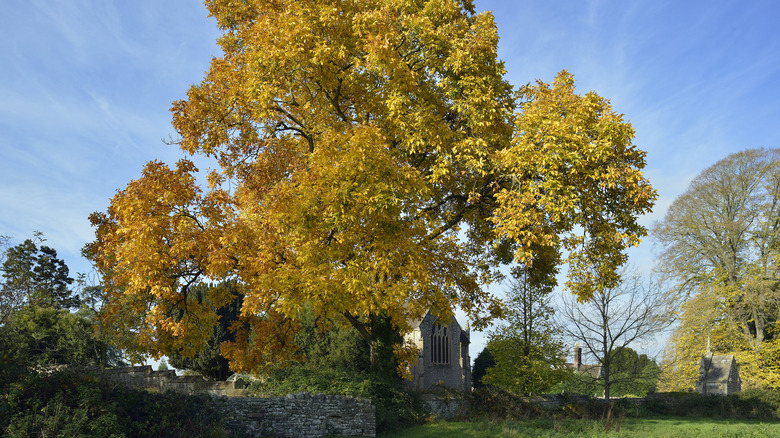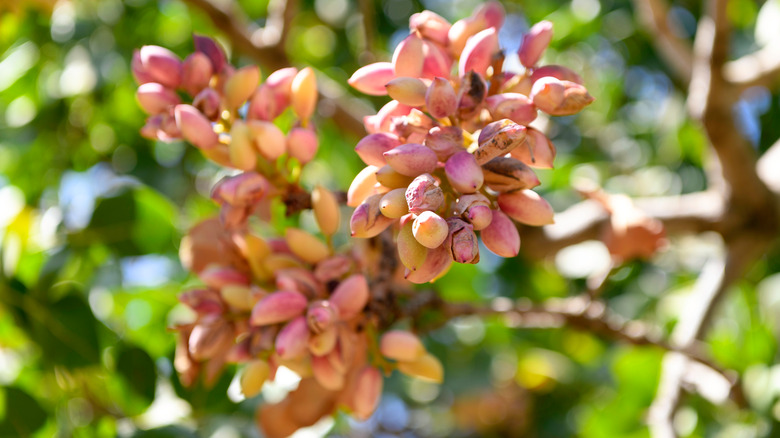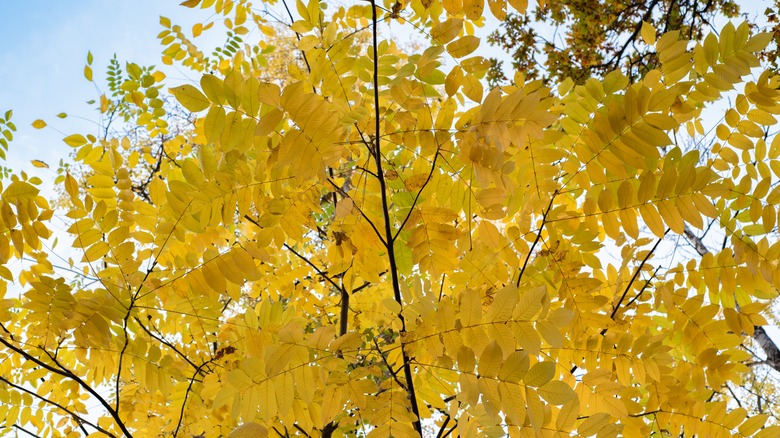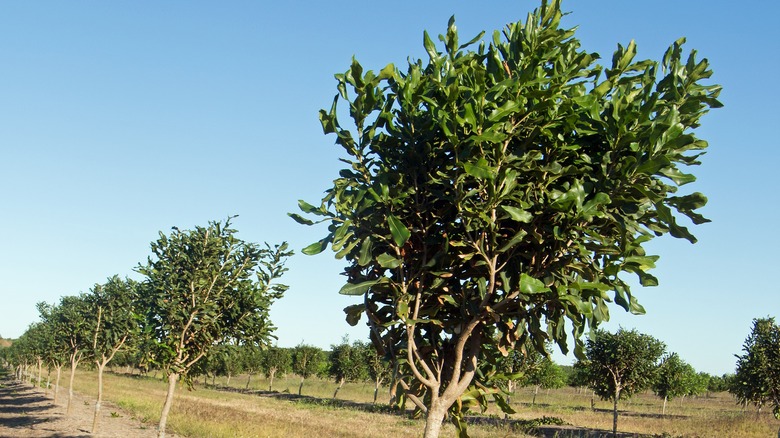10 Nut Trees That Will Bring A Bountiful Harvest To Your Yard
At the dawn of civilization, the first division of labor sorted the hunters from the gatherers. These days, with supermarket prices soaring, it pays to be a combination of both. One way to enjoy the zen experience of gardening, and to keep food costs down, is to grow your own. While many minds quickly turn to fruits and vegetables, trees that bear nuts can be as much a delight to the eye as a nutritious addition to your table.
Unlike many of the items you can grow at home, nut trees are not for instant gratification addicts; a good number of them require three to five years to produce anything edible. With the long-awaited nuts come other benefits as well. These magnificent trees oftentimes bloom in a stellar array of flowers and provide shade from the summer heat. It's also wise to keep in mind that, over time, they will require ample space, which makes them less than ideal for particularly small yards.
That said, here are 10 nut-bearing trees that, with proper care and room to grow in an appropriate USDA hardiness zone, can turn your home into a nut house — in the very best sense of the term.
1. American hazelnut
American hazelnut trees (Corylus americana) are shrubs native to the Eastern U.S. You'll find hazelnuts, also known as filberts, in everything from desserts to salads. Hazelnut flavored syrup has also become a popular coffee addition.
They're often grown in more than one hedge at a time to ensure a bountiful crop, and although considered shrubs, they can reach heights of 18 feet. Because they provide dense green foliage that turns to copper in fall, they're well suited for creating privacy and providing windbreaks, according to Prairie Nursery. Hazelnut trees also attract wildlife, and prefer zones four through nine.
2. Black walnut
Black walnut trees (Juglans nigra) consume serious real estate, since they grow to 75 feet or more. And because the seed-grown varieties are undependable for fruit production, many planters choose either grafted or well-known nursery products to ensure their years of effort won't be in vain.
These trees grow fairly easily throughout the Continental U.S., in zones four through nine. Once they start producing nuts at around year six or seven, the real work begins in cracking each one open. The Nebraska Forest Service points out that these trees are highly valued for their wood alone.
3. Pecan
Pecan trees (Carya illinoinensis) are synonymous with southern delicacies like pecan pie and other baked goods. And while no one can seem to agree whether it's Pe-CAHN or PEE-can, there's no shortage of love for the nuts they produce.
Plants for a Future says this native American tree grows best in zones six through nine, although some varieties have been declared viable into zone five as well. The nuts appear inside green husks that turn brown during ripening then split open to reveal a smooth-shelled center. Pecans are often shelled immediately after harvesting and stored away for later use.
4. Almond
The almond tree (Prunus dulcis) is a great option for the gardener who does not want to surrender an entire yard to a tree, hedge, or overgrowing shrub in order to harvest a few nuts half a decade from now. The hall's hardy variety promises to take up no more than 20 vertical feet.
Those who grow them cherish these trees not only for the edible almonds they yield, but for the 15-foot canopy of pink-hued blossoms they produce in late spring. Experts at the Arbor Day Foundation say these trees thrive in zones five through eight.
5. Cashew
Cashew trees (Anacardium occidentale) produce arguably the most popular nuts in the world. And guess what? They're not nuts. Cashews are technically seeds, according to Britannica, and the cashew tree is as attractive when bearing these fruit as the results are delicious. It's also renowned for being drought-resistant and for producing fragrant pink and white wintertime blossoms. Are you sold yet?
These trees favor zones nine through 11, grow to 12 feet tall, and provide considerable curb appeal in addition to their seeds (nuts), which they begin producing after only two years. That's half as long as most.
6. Chestnut
Chestnut trees (Castanea spp.) have rebounded after a blight wiped many out of existence half a century ago. Today's hybrids combine Chinese, European, and American varieties. They're native to most of the Northern Hemisphere and prefer temperate regions, but in order to perform at their peak, they do require the stimulus of a cold winter. Depending on the species, chestnut trees will grow to be between 65 and 80 feet tall.
They prefer acidic soils in zones four through nine, and produce unpleasant smelling flowers. According to New World Encyclopedia, they're also highly prized for their wood.
7. Shagbark hickory
In a genus of 18 species of trees, the shagbark hickory (Carya ovata) stands out above the rest. Much like pecans, which come from the same botanical family, hickory nuts reach maturity inside green-tinted husks that rupture to eject the nuts when ripe. These trees create beautiful fall foliage and they're known to reach heights of 100 feet, so make room.
Scientists have been working on these trees for generations to produce bigger nuts and more bountiful crops. Per Plants for a Future, shagbark hickories thrive in zones four through eight.
8. Pistachio
The pistachio tree (Pistacia vera) is a fussy deciduous desert native. It likes long, dry, hot summers and cold winters. In return, you get nuts that, just like cashews, are actually seeds. Fun fact: they were introduced to the U.S. only a century ago, and didn't reach mainstream popularity until after the Second World War.
These trees can grow 30 feet tall, more or less ideal for a suburban residence. They produce seeds (nuts) in their fourth or fifth year, but don't reach full production until year 15. Per New World Encyclopedia, plant them in zones eight to 10.
9. Butternut
Butternut trees (Juglans cinerea) are related to walnuts, although smaller — topping out at about 50 feet — and somewhat hardier. Butternuts, like others, require six or seven years before they begin producing edible nuts, which are sweeter than their walnut relatives, say the experts at the Arbor Day Foundation. Ripened nuts are ready to eat in early fall.
These trees are most commonly found in nature throughout the northeastern parts of the U.S. They are well acclimated to planting in zones four through eight, but they've often flourished in certain areas of zone three as well.
10. Macadamia
Macadamia trees (Macadamia integrifolia) commonly scrape the sky at 60 feet and produce some of the most sought-after fruit in the world. Although native to Australia, these trees have been transported across the globe, where they do best in climes with tropical or subtropical environments.
Grafted trees will produce nuts in as few as three or four years, and there's no need to pick them. Macadamia nuts simply tumble from the tree when ripe. They do need to be husked and air dried in order to reach their flavorful potential. Growables recommends raising them in zones nine through 12.
